What is happening in Gaza? 470,000 people face starvation as the situation becomes desperate
Find out the latest on the humanitarian crisis in Gaza, how you can help, and how the Red Cross and Red Crescent is responding
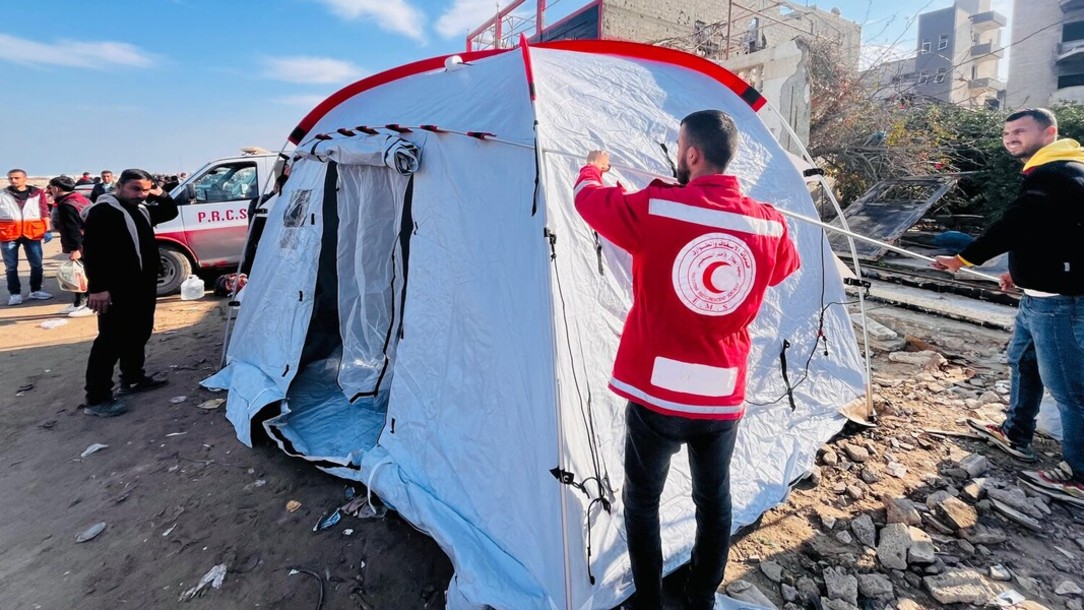
Palestine Red Crescent Society teams and volunteers provide first aid services and psychological first aid to families in Gaza. PHOTO: Palestine Red Crescent Society
DONATE to the GAZA CRISIS APPEAL
Last updated 25 June 2025
It has been 20 months since the attacks in Israel and the escalation of a conflict which has led to intolerable suffering in Gaza and the wider region. Here you can find out what's been happening, how we've responded and what you can do to support people affected by the crisis.
The latest news update on the Gaza humanitarian crisis
- After weeks without any aid able to enter, Gaza faces a critical risk of famine.
- 470,000 people in Gaza face starvation – that's 22% of the population.
- More than 52,000 people have died and at least 118,000 have been injured in Gaza.
- The healthcare system is on the edge of collapse.
- 90% of the population has been forced to flee their homes.
- Families of those held hostage in Gaza remain caught between hope and despair as they desperately await news of their loved ones.

People returning on foot to North Gaza. PHOTO: Palestine Red Crescent Society
A catastrophic situation in Gaza
The humanitarian situation in Gaza is unbearable - and deteriorating sharply. Every day has been a fight for survival for the people in Gaza.
Food supplies are all but gone, the medical system is shattered and there is an almost complete lack of humanitarian aid entering Gaza. Entire families are trapped and desperately seeking safety and security.
The collapse of the health system, coupled with continued fighting and the complete suspension in the delivery of aid for 11 weeks, has led to an unprecedented rise in unmet humanitarian and medical needs.
After more than 20 months of hostilities, there is nowhere in Gaza where critical infrastructure has not been impacted. This infrastructure is crucial for services like electricity and water to function and to provide displaced communities with power, safe drinking water, hygiene and sanitary services, and medical care.
Donate to the Gaza Crisis Appeal
Is aid getting into Gaza?
For over 12 weeks, aid has not been able to enter Gaza.
The International Committee of the Red Cross (ICRC) and Palestinian Red Crescent Society (PRCS) have warned that relief supplies have been nearly exhausted.
The clock is ticking, with supplies running dangerously low, making it harder and harder for humanitarian organisations to respond. With food, fuel and medical supplies nearly gone, people are living on the brink. PRCS and ICRC are doing everything they can with the resources they have.
Take a more in-depth look with our explainer: how is aid getting into Gaza?
Is there a famine in Gaza?
Gaza faces a critical risk of famine. The entire population is facing high levels of acute food insecurity, with almost half a million people facing starvation.
The independent Integrated Food Security Phase Classification (IPC) have warned that if the escalation of hostilities and mass displacement of people continues and humanitarian organisations continue to be unable to access populations in dire need, then famine in Gaza is not just possible but increasingly likely.
Explainer: what is food insecurity and why is it a threat?
Is there any clean water in Gaza?
Seventy per cent of critical water infrastructure has been damaged or destroyed by the ongoing hostilities. Dehydration is making people extremely ill, with children the most vulnerable.
Infectious diseases, such as vomiting, diarrhoea and hepatitis are spreading rapidly in Gaza, especially in overcrowded areas where people are sheltering.
A year of conflict in Israel and Gaza
On 7 October 2023, 1,195 people were killed in Israel and 251 taken hostage.
Since then, more than 52,000 people have been killed in Gaza and many more injured. Hostages are still being held, and innumerable survivors are traumatised.
The ceasefire agreement reached in January 2025 gave millions of people in Gaza respite from relentless suffering. Families that were torn apart were reunited or able to put their loved ones to rest.
In March 2025, hostilities renewed, and the ceasefire agreement collapsed.
"No aid trucks means more families struggling to find food, more families unable to access clean water, more families left to live without adequate shelter, and more families left in in desperate need of healthcare," says Gabriel Karlsson, the British Red Cross's country cluster manager for the Middle East and North Africa. "Facilitating access to essential, life-saving assistance is an obligation under International Humanitarian Law."
It is vital that humanitarian aid can enter Gaza, families can be reunited, and lives can be saved.
Palestine Red Crescent Society response over the past year
For the past year, nearly 1,600 staff and volunteers from the Palestine Red Crescent Society (PRCS) have been working tirelessly to provide life-saving support in Gaza. In the face of immense challenges, losses and risks to their own lives, PRCS has distributed 1.6 million emergency relief items, and provided emergency medical support to over 100,000 people.
“We are doing everything we can with the resources we have," says Abdul Aziz Abu Aysha, director of the disaster risk management department at PRCS. “Every day we see more children without the food they need, more patients we can’t treat, and more families who have lost everything. We need an increase in aid now — without this, we will be forced to watch people suffer with no way to help."
In March 2025, eight PRCS medics were killed while on duty in Gaza, while one PRCS colleague is still missing. This brings the number of PRCS colleagues killed in Gaza since 2023 to 28. Two PRCS colleagues have been killed while on duty in the West Bank, since 2023.
“In life, [their] uniforms signalled their status as humanitarian workers; they should have protected them. Instead, in death, those red vests became their shrouds,” said Jagan Chapagain, secretary general of the International Federation of the Red Cross. “We cannot allow these deaths – any of these attacks – to become normalised. We must reject the narrative that they are inevitable, or part of the risk of the job.”
Magen David Adom response since 7 October 2023
In the first moments after the attacks on 7 October, Magen David Adom mobilised 1,500 ambulances and over 10,000 first responders. Tragically, six Magen David Adom colleagues were killed while responding.
Since then, Magen David Adom has responded to over one million emergency calls and collected more than 300,000 units of blood. Magen David Adom continues to support communities, particularly those living near the borders with Gaza and Lebanon, by answering emergency calls and dispatching ambulances and paramedics.
The plight of hostages remains a priority
The families of over 200 hostages endured months of terrible suffering. More than a year on, the plight of the hostages taken from Israel remains a priority and we call for their immediate and unconditional release.
When the January 2025 ceasefire agreement was reached, the International Committee of the Red Cross (ICRC) facilitated multiple release operations, reuniting those held hostage with their families. It also facilitated the release of Palestinian detainees.
The ICRC remains ready to continue to implement the agreement so that more families can be reunited.
The British Red Cross reiterates what the International Committee of the Red Cross (ICRC) has said from the outset of the crisis: that those taken hostage must be released immediately, and the ICRC must have access to check on their health, the conditions they are being detained in, and their treatment.
"We've worked tirelessly, day and night"
Palestine Red Crescent Society workers risk their lives every day to deliver vital aid and providing emergency care to their community.
Please donate nowWhat's happening in the West Bank?
The security situation and rising violence in the West Bank is deeply concerning. According to UNOCHA, since January 2024, there have been:
- 600 deaths, including those of 109 children.
- More than 4,000 injuries, including to over 800 children.
- 44,000 people displaced from their homes.
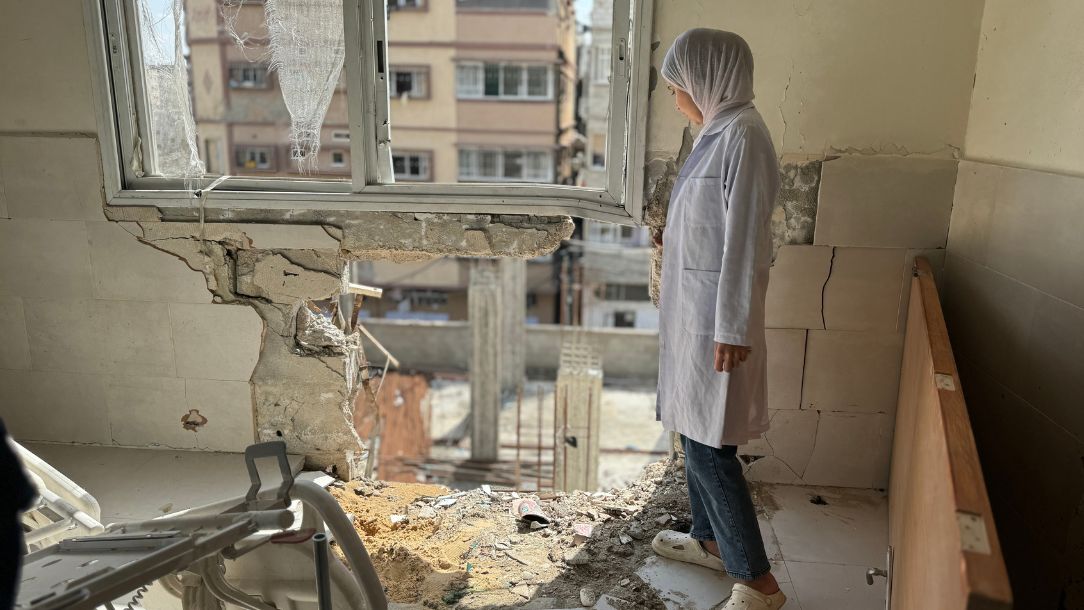
Doha, a volunteer nurse, assesses the damage inside a hospital room she once worked in. PHOTO: Thomas Glass/ICRC
Are any hospitals open in Gaza?
The healthcare system in Gaza has all but collapsed. As of May 2025:
- Gaza’s healthcare system is near collapse, with widespread destruction of medical facilities.
- Severe medical supply shortages: 47% of hospital medications, 70% of primary care medications, and all chronic disease treatments are unavailable.
- Specialist care, like cardiac surgery and orthopaedics halted or severely limited.
- The Red Cross field hospital in Rafah has treated over 80,240 patients, performing over 3,400 surgeries.
- Supplies are low, and without urgent replenishment, essential lifesaving care may soon be impossible.
"We experienced first hand, the horror of this conflict"
Dr Sandy Inglis, ICRC's chief medical officer, treated people involved in a mass casualty event in May. He describes what he saw.
More on the Red Cross field hospital in RafahAre people homeless in Gaza?
A million people have been forced to evacuate Rafah since the start of May 2024, and people have been displaced up to six times.
Following the ceasefire agreement, many hundreds of thousands of people have returned to northern Gaza. According to OCHA, 565,082 have crossed from southern to northern Gaza, mainly on 27 and 28 January.
While the recent ceasefire agreement allowed many to return home for the first time in 15 months, the humanitarian challenges remain overwhelming. The Palestine Red Crescent Society (PRCS) continues to work tirelessly on the ground to provide essential support.
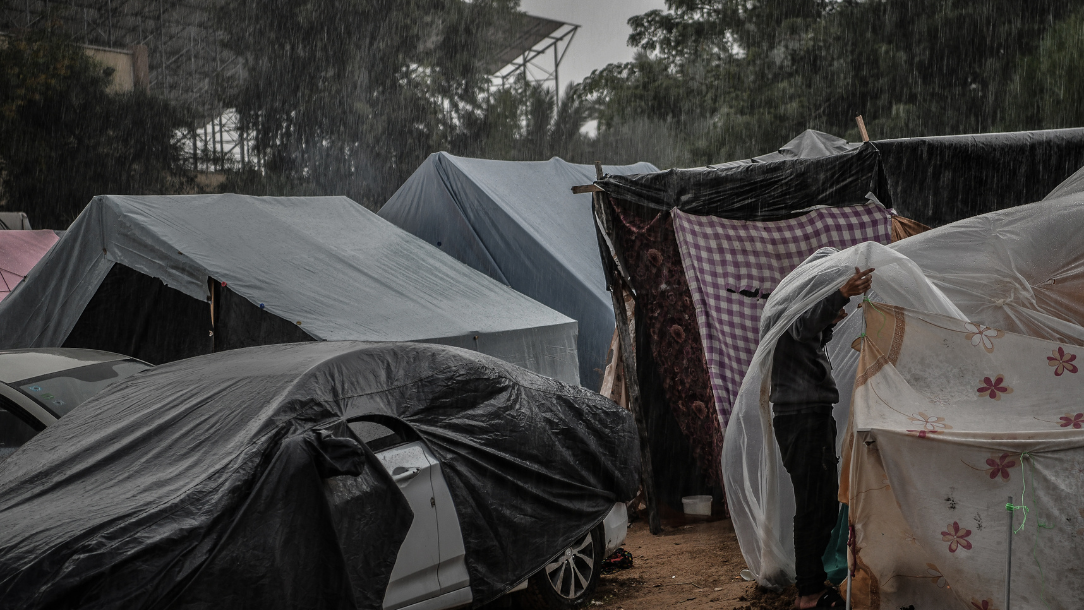
90% of Gaza is displaced. Some are living in temporary shelters like tents or cars, others are sleeping in the open. PHOTO: Abed Zaqout/ICRC
How is the Palestine Red Crescent supporting people in Gaza?
The Palestine Red Crescent Society is working day and night, risking, and losing, their lives to deliver assistance. They are mandated to receive and distribute this aid to where it is needed most in Gaza.
In Gaza PRCS teams have:
- received over 22,000 trucks of humanitarian aid for distribution in Gaza
- distributed 1.6 million emergency aid items
- provided almost 900,000 health services.
In the West Bank PRCS teams have:
- provided healthcare services in 11 clinics
- delivered relief items to 220,000 people, including food, water, tents and blankets
How to help people in Gaza
The best way to help people in Gaza today is by donating to the Gaza Crisis Appeal.
Throughout this crisis, Red Cross and Red Crescent teams have been working day and night in Gaza, the West Bank, Israel, Lebanon, and neighbouring countries. Their dedication and the funds raised so far have helped provide lifesaving support, including food, shelter and medical aid.
Aid alone cannot solve this crisis and it is not a substitute for political and other long-term solutions – but it will save lives. Together, with your support, we will continue to be there for people wherever they are for as long as we are needed, in the coming weeks, months and years ahead.
You can help us continue our work in Gaza and affected areas in the wider region, including Lebanon, by donating to our Gaza Crisis Appeal.
Map of Israel and the Gaza Strip
.jpg?sc_lang=en&mh=610&la=en&h=610&w=1084&mw=1084&hash=1828C80CBF5A228E7930666D4A5C59AC)
What is the British Red Cross doing for Gaza?
The British Red Cross is directly supporting our partners in the Movement – including the Palestine Red Crescent Society – to respond to these urgent needs, providing funding as well as expert staff.
We have also deployed logistics and managerial staff to the region to support with the delivery and distribution of aid and humanitarian assistance.
We will do all we can to support people on both sides of the conflict for as long as we’re needed.
What is the Occupied Palestinian Territory?
The Occupied Palestinian Territory or OPT is an internationally accepted description, used by the United Nations. It refers to the Gaza Strip and the West Bank (including East Jerusalem).
What is the Gaza Strip?
The Gaza Strip is part of the Occupied Palestinian Territory. It is an enclave 25 miles long and six miles wide, bounded by the Mediterranean Sea, Israel, and Egypt.
Gaza Crisis Appeal
Millions of people across Gaza, Lebanon and the wider region are in urgent need of food, shelter and medical care. Please help now.
DONATE NOWStay informed: Israel, Gaza and West Bank conflict
.jpg?sc_lang=en&h=610&w=1084&la=en&hash=E040E90A53D120635A2A99FF90DB3C03)
An update on our Israel and Occupied Palestinian Territory Appeal
Thanks to all supporters who donated to our Israel and Occupied Palestinian Territory Appeal.
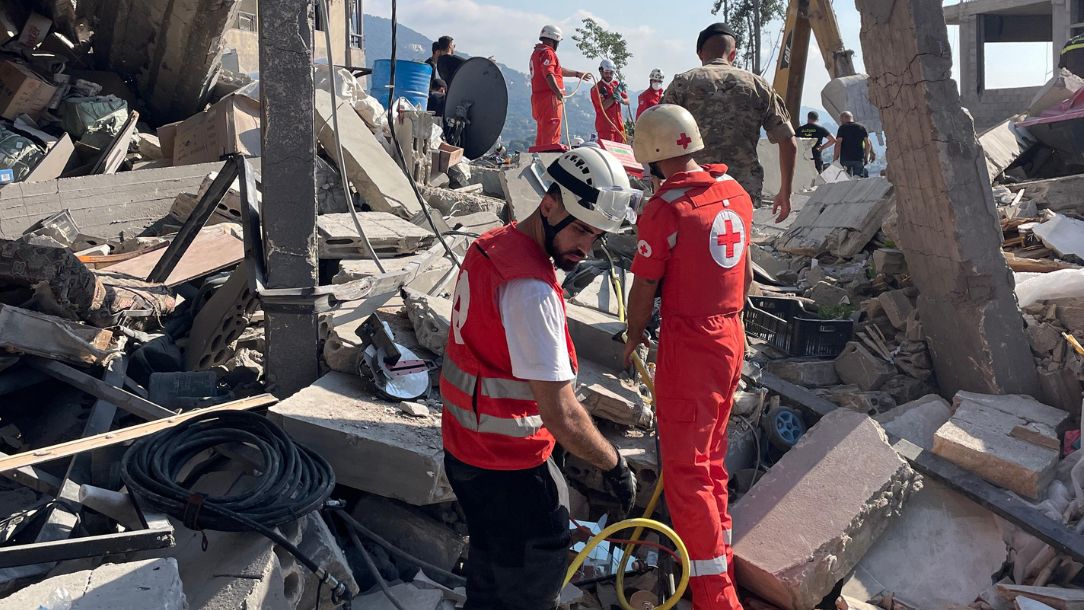
What is happening in Lebanon and Israel?
The latest on the situation in Lebanon and Israel
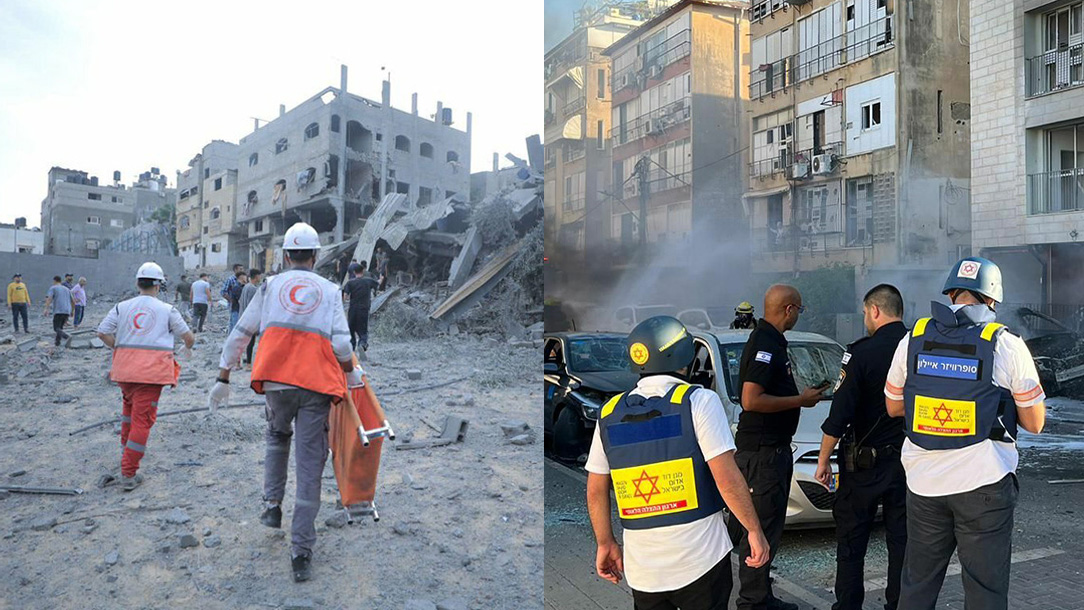
Who are Magen David Adom and the Palestine Red Crescent?
You’ve probably heard about the Palestine Red Crescent and Magen David Adom in the news lately. If you’ve wondered how they relate to the Red Cross, here’s an explainer.
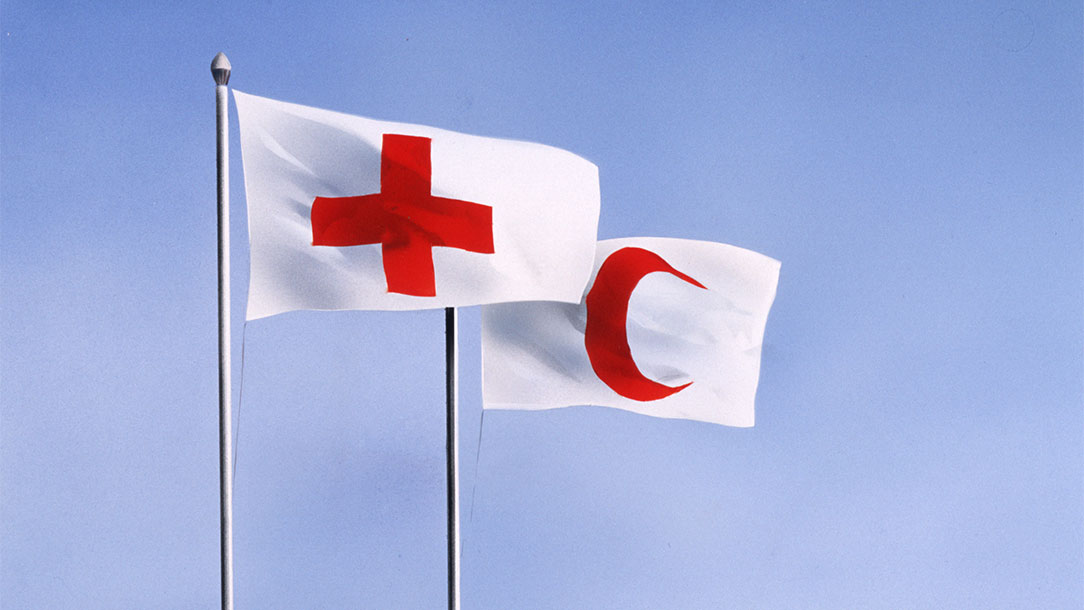
Explainer: what is the Red Cross doing to help hostages in Gaza?
As a neutral intermediary, the International Committee of the Red Cross plays an important practical role once the release of hostages has been agreed.

